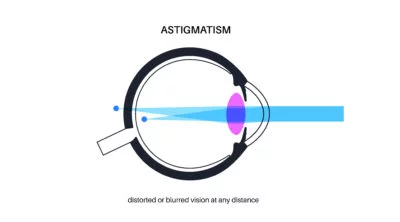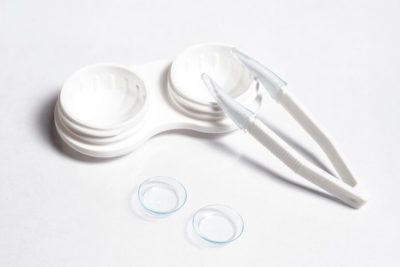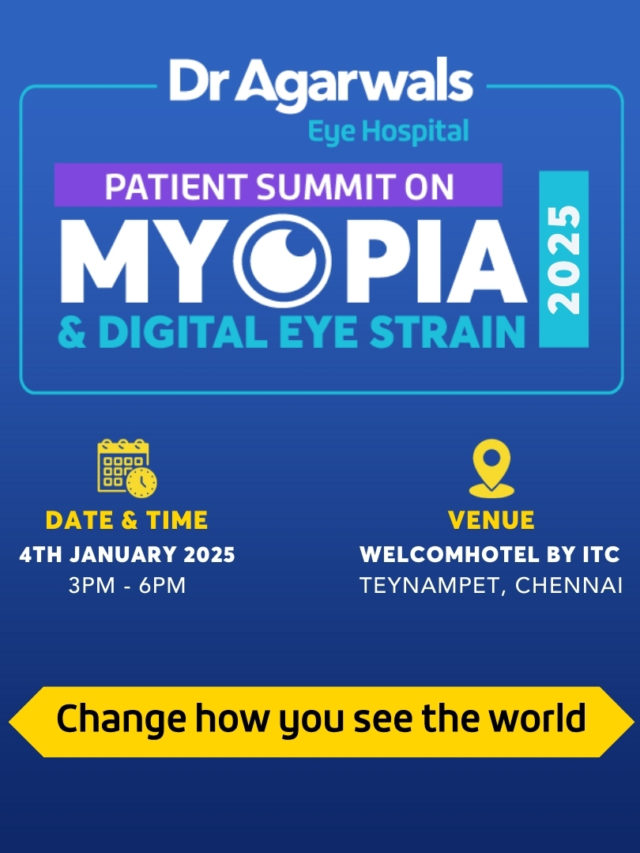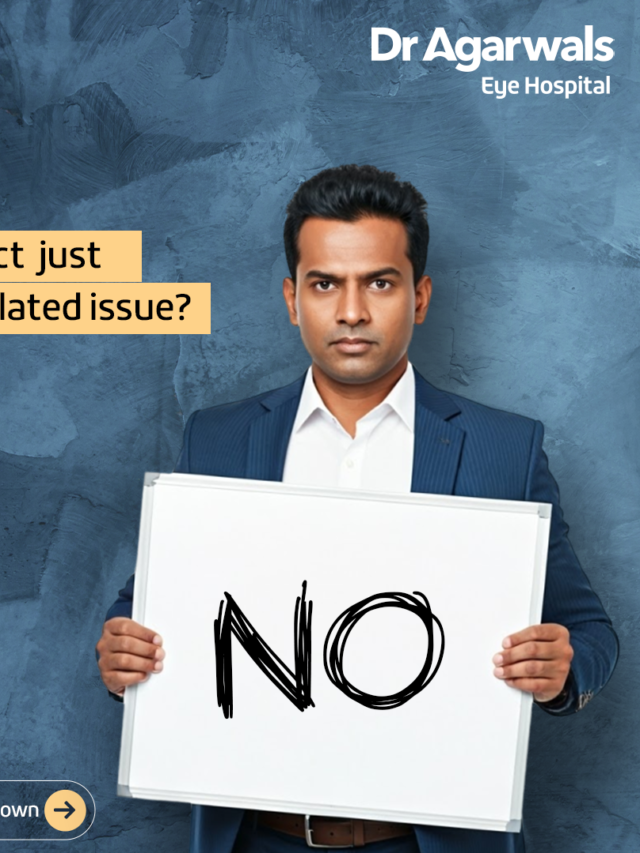Vision problems affect millions worldwide, and one common issue people encounter is cylindrical sight. This condition is linked to an irregular curvature of the cornea or lens, often noted in prescriptions as cylindrical power.
Many people confuse it with general refractive errors, but understanding what cylindrical sight is helps prevent long-term strain and poor vision. Cylindrical power correction through glasses or contact lenses plays a crucial role in maintaining clear and comfortable eyesight.
Understanding Cylindrical Sight
What Does Cylindrical Sight Mean in Simple Terms?
So, what does cylindrical sight mean in easy words? Simply put, it refers to a vision problem where the eye does not focus light evenly due to an irregularly curved cornea.
This leads to blurred or distorted vision at different angles. In medical terms, this is linked to astigmatism, where cylindrical sight means light rays fail to focus on a single point on the retina.
Cylindrical Power in Eye Prescriptions
When you see a cylinder (CYL) value in your eye prescription, it indicates the amount of correction needed for cylindrical sight. A negative value often corrects near-sighted astigmatism, while a positive value adjusts far-sighted astigmatism.
Cylindrical power differs from spherical errors, as it focuses on irregular corneal shapes. Knowing how to interpret this value is crucial for choosing effective glasses or lenses tailored to your visual needs.
How Cylindrical Sight Affects Your Vision
Cylindrical sight can make images appear stretched, blurry, or unevenly sharp. People may struggle to see fine details, such as reading small print or recognising faces in dim light.
Unlike spherical errors, which affect overall focus, cylindrical errors distort specific angles of vision. This creates challenges in daily tasks, such as driving at night or working with screens, making cylindrical vision correction essential for clear, balanced sight.
Causes of Cylindrical Sight
Astigmatism as the Primary Cause
The main reason behind cylindrical sight is astigmatism, where the cornea or lens has an uneven curvature. Instead of being spherical, the cornea may be shaped more like a rugby ball, causing light rays to scatter rather than focus.
This results in distorted or blurred vision at certain angles. Because astigmatism directly alters corneal shape, it is the leading contributor to cylindrical sight loss worldwide.
Genetic Factors and Family History
Heredity plays a significant role in cylindrical sight. If close family members have astigmatism or corneal irregularities, you are more likely to develop similar problems.
Children with inherited corneal shapes may develop vision issues early. Genetics influences both the degree and progression of cylindrical sight, making routine eye exams vital for those with a family history of refractive errors.
Eye Injuries and Surgeries
Physical trauma or eye surgeries can alter the cornea’s structure, creating irregular curvature. For instance, corneal injuries from accidents or poorly healed surgical wounds may induce astigmatism, resulting in cylindrical sight.
Certain surgical procedures for vision correction may occasionally leave uneven corneal surfaces, resulting in residual cylindrical power. This highlights the importance of post-surgery monitoring and careful medical care.
Other Health Conditions
Systemic and ocular health conditions also influence cylindrical sight. Diabetes, keratoconus, and certain corneal diseases weaken or distort the corneal structure.
In keratoconus, the cornea thins and bulges outward, leading to irregular astigmatism that requires advanced correction. Managing underlying health issues is crucial to prevent worsening of cylindrical sight and preserve overall eye function.
Symptoms of Cylindrical Sight
Symptoms of cylindrical sight often include blurred or distorted vision, difficulty focusing on fine details, eye strain, and frequent headaches. Many patients struggle with night driving or reading small text, as uneven corneal curvature causes irregular light refraction.
Common Signs You May Have Cylindrical Sight
Recognising the symptoms of cylindrical vision is key to timely treatment. Patients often experience blurred or distorted sight, especially when focusing on fine text or during nighttime driving.
Other common signs include frequent eye strain, headaches, or squinting while reading. These symptoms make daily activities difficult without cylindrical vision correction, and if left untreated, they may significantly reduce quality of life.
Diagnosis of Cylindrical Sight
Comprehensive Eye Examination
A complete eye exam is the first step in diagnosing cylindrical sight. Tests such as refraction, keratometry, and corneal topography help measure the curvature of the eye’s surface.
These tools identify irregularities that cause blurred or distorted vision. Detecting cylindrical sight early ensures timely intervention with corrective lenses or surgery, helping to prevent the progression of symptoms and alleviate further visual discomfort.
Understanding Your Eye Prescription
Eye prescriptions contain sphere (SPH), cylinder (CYL), and axis values. The cylinder number specifically indicates the degree of cylindrical sight correction needed.
Patients with higher values usually require stronger correction. Learning how to interpret these numbers helps individuals better understand their visual condition and ensures they select the correct lenses.
Treatment Options for Cylindrical Sight
Corrective Lenses
The most common cylindrical sight treatment involves the use of glasses or contact lenses. Glasses with cylindrical power correct irregular focus, while toric contact lenses are specially designed to address astigmatism.
These tools provide effective cylindrical vision correction, enhancing clarity and reducing eye strain. Regular updates to prescriptions ensure patients maintain optimal vision correction over time.
Refractive Surgery Options
For individuals seeking permanent solutions, refractive surgeries such as LASIK, SMILE, or PRK can correct cylindrical sight by reshaping the cornea. These procedures are safe and effective for many patients but require evaluation of corneal thickness and overall eye health. Surgical options remain one of the leading cylindrical sight treatment methods for those unsuitable for corrective lenses.
Lifestyle and Home Measures
While not a cure, lifestyle choices can help manage symptoms of cylindrical sight. Taking regular screen breaks, using proper lighting, and managing conditions like diabetes reduce strain.
Routine eye check-ups allow early detection of worsening cylindrical power. These practices support both eye comfort and long-term visual health.
Preventive Measures for Cylindrical Sight
Regular Eye Exams
Routine eye examinations remain the most effective way to detect cylindrical sight early. Individuals with a family history of vision problems, including adults and children, should undergo regular eye exams. Early detection of cylindrical sight prevents worsening refractive errors and reduces the need for advanced treatments later.
Eye Protection and Healthy Habits
Protecting eyes from injury and maintaining healthy habits play a key role in preventing cylindrical sight progression. Wearing protective eyewear during risky activities, eating a balanced diet rich in antioxidants, and avoiding smoking are practical steps. These measures support both corneal health and overall vision stability.
Conclusion
Cylindrical sight refers to vision problems caused by irregular corneal or lens curvature, commonly linked to astigmatism. Understanding what cylindrical sight is, its causes, symptoms, and treatment options ensures patients can seek timely care.
Whether through corrective lenses, surgery, or lifestyle adjustments, effective management of cylindrical sight improves daily functioning and reduces eye strain. Regular eye check-ups remain the cornerstone of prevention, offering the best chance for long-term visual clarity and health.









